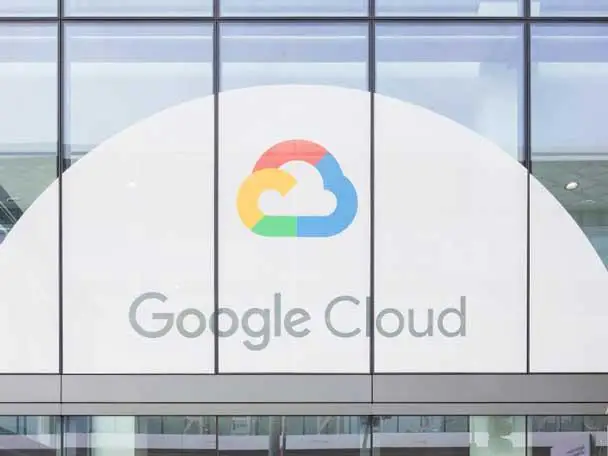Quantiphi CEO On Four Popular GenAI Use Cases And Google’s AI Push
From code generation to information retrieval and synthesis, AI channel superstar Quantiphi’s Asif Hasan explains four very popular generative AI use cases customers are demanding right now.

Quantiphi’s Top GenAI Use Cases: Information Synthesis, Productivity, Code Generation And Automation
Artificial intelligence all-star Quantiphi saw over 300 generative AI customer opportunities in 2023 and expects more this year as businesses will seek out GenAI-powered productivity, data and code generation solutions.
Founded as an AI-first digital engineering company in 2013, Quantiphi is years ahead of the curve when it comes to AI production and expertise.
“The previous generation of AI was focused on task-specific models and each model had one, and only one, task. Generative AI flips that on its head, saying, ‘You can pretrain a model, and then fine-tune the model for doing hundreds or even thousands of tasks,’” said Quantiphi President and Co-founder Asif Hasan. “So it essentially democratizes a customer’s access to AI in a way that has not been [done] before.”
Hasan said there is “a massive opportunity” to win net-new customers and increase services sales in 2024 because GenAI is now able to “mimic human levels of performance in a broad variety of tasks.”
[Related: AWS, Microsoft, Google Lead Gartner’s Cloud Services Magic Quadrant]
GenAI Charge Alongside Google Cloud
Thanks to the red-hot surge in generative AI innovation from the largest tech companies in the world last year, Quantiphi worked on hundreds of GenAI customer opportunities in 2023.
The Marlborough, Mass.-based company has a tight partnership with cloud and AI giant Google Cloud. Thanks to new innovation from Google and customer interest in generative AI surging, Quantiphi has been able to grow from 500 employees in 2018 to now 3,200 employees, including approximately 1,000 trained AI engineers.
Revenuewise, Hasan said generative AI isn’t generating massive sales growth just yet as it still needs time to mature in the market. “But if I look at all these opportunities that is going to go from education to proof of concept to MVPs [minimum viable products] to production to scaling, then I can see the trajectory of us is going to change massively,” Quantiphi’s Hasan said.
In an interview with CRN, Hasan explains the four biggest categories of generative AI use cases customers are demanding from Quantiphi and why he’s bullish on Google Cloud’s GenAI strategy.

Popular Generative AI Use Case No. 1: Instant Information Retrieval And Synthesis
In terms of specific areas of the type of work that we are seeing customers want to do with generative AI, we have seen four very distinct patterns. These patterns have been informed by about 300-plus different customer conversations that we’ve had over the last year.
The first one is around information retrieval and synthesis.
So what do I mean by that? It’s essentially boosting the productivity of worker knowledge through knowledge access and synthesis.
Customers are saying, ‘Look, I want to be able to have a ChatGPT-like experience. But I don’t want to do it on all of the information that is available on the World Wide Web. That’s not useful to me. I want that experience on top of my own content repositories and knowledge bases.’
For example, I have a field engineer who’s going to repair an HVAC unit in the field. I need them to be able to talk to the manual in a similar way they are talking to ChatGPT and get a way to diagnose it very easily, then perform the 10-step process, etc.
So that’s the most common use case and about 20 percent of all conversations that we are having belong in that category.

GenAI Use Case No. 2: Code Generation And Code Conversion
The second category of customers seeking GenAI use cases is around code generation and code conversion.
So a customer says, ‘I want to write my specs in natural language. Then I want the system to either generate net-new code on the basis of my specs.’ Or it’s, ‘I’m sitting on my old legacy system and I want to modernize that system. So it needs to go from a certain programming language to a more modern programming language.’ That’s called refactoring.
So ‘I want to refactor and I want to get rid of my technical debt. And I want generative AI to be able to do that.’

GenAI Use Case No. 3: Structured Data
The third category is customers saying, ‘I want to be able to talk to my structured data. So I have a data warehouse that helps my customer 360 information. And I’m curious on trying to understand which cohorts of my customers are most likely to churn in the next month.’
So they say, ‘I want to type my question in natural language. And then I want the system to go and fetch the data from the data warehouse and answer the question back to me in natural language and provide me supporting charts, graphs, etc.’
GenAI Use Case No. 4: Automation
The fourth category of use cases we’re seeing for generative AI is around automation.
So that is using generative AI to automate large parts of steps in a process. For example, like invoice processing, where you have to have your purchase order, your contract, your invoice and you have to match attributes from one document to the other and make sure that everything is cross-validated before payment is made.
Another example is content automation like generating a press release. Creating the first draft of a press release by giving prompts. Those are the types of tasks from an automation standpoint.

Are you bullish about Google Cloud’s generative AI strategy?
Absolutely. The degree of investment that we have seen in just Google positioning its generative AI solutions in front of customers [last] year has been unprecedented.
The generative AI Live Plus Labs event series that Google kicked off in 2023 is worldwide. That is very helpful. Because what Google does there is they will have keynote speakers, lab sessions, fireside chats regarding successful deployments of generative AI. What that does is it, from a customer standpoint, it turns customers from being curious about generative AI to becoming informed buyers of generative AI, which makes our job easy. Google invites partners to these events to explain how partners can help customers. So our presence is there and that’s at no cost to us.
The other thing that Google has done is it’s created a lot of what they call Skills Boost training programs at no cost to the partner.
In terms of training, Google has also released another very interesting course on using embeddings in downstream task processing. … So there is a lot of work that has gone into creating a developer ecosystem that understands the technology stack and partners, and we are a beneficiary of this.
Then there’s also these monetary incentive programs.
I would say it’s a very well triangulated thought process in terms of creating informed buyers; enabling the partner ecosystem to understand how to do it, ready themselves, and credential themselves and train their workforce; and then provide the monetary incentives to be able to take advantage of these funding mechanisms. For example, if the customer is hesitating in making that first initial investment, there are funds available to defray the costs and to invest in those to give customers an easy on-ramp and give partners the funding.
Once that flywheel kicks in, it then becomes a self-sustaining mechanism.